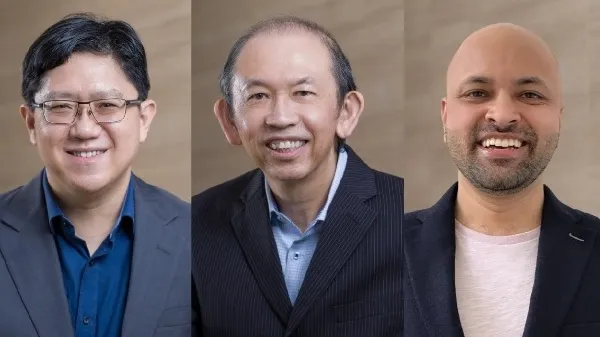
CPG shares new ideas for Singapore's post-COVID-19 workplace
More diverse range of work options, such as repurposed workplaces and better-equipped home offices, could be part of the new normal.
Transformative changes could be coming to Singapore with CPG Corporation, one of the country’s most established firms. Rapid adoption of technology and digitalised workflow, which has taken root during the pandemic, is gathering pace and speeding up, opening doors to increased next phase of technological application such as AI, robotics, and automation.
CPG's Group Chief Innovation Officer Tan Shao Yen said remote working has gained widespread social acceptance. The "new normal” has imposed many new requirements in workplaces, and most of them are requirements meant to safeguard occupants and minimise the risk of interhuman transmission.
“Work-from-home culture has driven demand for resilient and mixed-use communities. The shift will drive a repurposing of some traditional workplaces, such as CBD and business parks. The rapid adoption of technology will lead to an era of smart and resilient facilities,” he said.
“You just think back, reflect on the days that every day you have to commute, go through the rush hours. Everyone's crowding the traffic to get to the workplace. And at the end of day, you're just crowding the traffic again to come back. What for?” he added.
Shao Yen said CPG envisions pandemic-resilient communities to cater not just to homes, but also mixed-use buildings which will have space for offices and shared workplaces.
At the moment, HDBs in Singapore are focused on localised housing apartments. However, he sees places like the HDBs to grow into more developed communities where it will likewise open more business opportunities not just for businesses but also to the local community.
"The multiple agency collaboration in Singapore has laid a very good foundation, by providing layers of green, blue, and social infrastructure in estates, particularly the HDB Heartlands. It provides a rich tapestry upon which a diverse range of ‘third places’ and affordable services to support remote-work, remote-learning, adding to and complementing the traditional homes, the ‘first places,’ and workplace, the ‘second places’,” he said.
CPG is projecting that demand for a wider range of housing products will rise, meeting different budgets, as people will need conducive, flexible spaces within the home to cater to their remote-work or remote-learning.
He added that enhanced utilisation of existing infrastructure such as park spaces could be enhanced with pavilions, and void decks in HDB blocks could be looked into.
“So in the HDB Heartlands that there will be spaces like that, where it will be naturally ventilated, surroundings are conducive, green, and you don't have to rush crowding the traffic and be exposed to risk,” he said.
“You can actually work from conducive workspaces but connect to your offices and your co-workers remotely using technology. So we think the demand for that will rise,” he added.
During the pandemic, both traditional and modern companies needed to quickly shift to adapt to a digitalised way of doing business. However, Shao Yen recognises that the need for physical offices will still be present. This is to meet the intangible need of the employees to have personal interactions from time to time.
“When we need to get a point across, we use Zoom. We don't need to incur the cover to cover footprint to meet each other physically. But at some point, if I want to connect with you, as a person, we say, can you come to our office and meet us in person, that part cannot be replaced,” Shao Yen said.
“So the question is, going forward, even though the footprint of our office will reduce, how do we strengthen that aspect of office space to become more humanised, more biophilic? We need to introduce nature into offices. So it's not going away, that humanizing aspect is not going away,” he added.
Increased health awareness
In today’s changing environment, the need to elevate the standards in office spaces is more in-demand than ever. Employees are more cautious and inquisitive about a company’s efforts in providing safe offices. CPG noted that health and safety have been on top of their considerations when redesigning office spaces.
Senior principal architect Saurabh Bhagra, the principal architect of Singapore’s renowned National Centre for Infectious Diseases and Centre for Healthcare Innovation, said that from what they have observed so far, large offices are not irrelevant as long as the workplace density is managed appropriately. The number of people working within a given space is the primary consideration, how they interact, and how other numerous factors will change the safety of everyone working in that space.
“The traditional workspace wasn't ready for this pandemic. The key question is density management within the workspace. We need to be mindful of how work is being done in the office, how people interact, and their activities. And as the nature of work evolves in future, this will be an ever changing scenario,” he said.
Saurabh shared that whilst organizations are gearing to improve the health and safety of their workplace, and planning for extensive rehauls, they need to take a more balanced approach in design provisions. When asked if negative pressure meeting rooms will become a new norm, Saurabh opined that general directional airflow within an open office can be considered but measures like negative pressure rooms perhaps will be more appropriate for sick rooms in offices. Similarly, provision of large meeting rooms needs to be re-evaluated.
“Right sizing the spaces and adopting appropriate engineering systems will be critical. The adoption of virtual collaboration is also aiding the de-densification of offices in a way that we don't need many large meeting rooms. Technologies such as mixed reality are making it possible for people to bridge the gap between digital and physical spaces,” he said.
“To say that you need meeting rooms with negative pressure is an extreme scenario. Negative pressure rooms are more appropriate for acute healthcare facilities. We need to be mindful of the solutions we propose, so that we do not overly burden the operational cost of running these facilities,” he said
Another plausible solution to this problem is the use of technology, particularly sensors and Internet of Things (IoT) capabilities. Mok Kwong Wah, director of the Innovation Management Office, shared that this is being currently integrated in CPG’s projects.
“Sensors, intelligent smart sensors, IoT, which can detect environmental conditions. We know from studies for example, that a pathogen like a virus or COVID, they can only survive within a certain temperature humidity range. So we're going to ensure that actually in the office you can reduce the risk of infection,” he said.
“We talked about how people actually physically touch the door handles, taps, and so on. Instead of actually physically operating all these devices, we can use sensor technology. For example, automatic sensor taps, doors can be operated open or closed, or even sliding doors by auto sensors. A lot of this technology has been implemented and is already available, and they can be applied anywhere in the world,” he added.
Conducive working environments
In keeping with the shifting purposes of the workplace, CPG said that one of the trends is towards more conducive working environments to foster collaboration. With the pandemic introducing work-from-home setups and employees finding their own homes to be a better workplace than the office, companies must redesign their spaces as they adapt to the new normal.
Saurabh said they are seeing an increasing demand for workplaces with diverse social and work settings to support hybrid workstyles in human centric environments. They also see the physical offices primarily as spaces for social interactions and collaboration in relaxed work environments.
“A social collaboration space will be a place where employees come to share ideas and connect with the office community. It could be a diverse work setting, which can facilitate the type of work you need to do. If providing beanbags makes it comfortable, then yeah, sure, why not? But I think it can be a combination of amenities that basically give you a comfortable environment to be effective at work. Workplaces should therefore be more relaxed and reflective of that culture,” he explained.
He clarified that this informality is not merely a trend that they are riding on. This move to an informal office setting may lead to more productivity for companies as it will provide a more relaxing environment to the employees. Likewise, the modern office can be an avenue to reflect a company’s core values and culture, by showing that the work is driven by the employees themselves and not necessarily the tight-knit rules of traditional offices.
“Certainly, elements that basically foster that community to recreation also needs to go back to the organizational values and all, so it has to be a balance. You really cannot be so informal, but that informality will start to trickle down to how much an organization can stretch and I think, in a way, is also reflective of the people working there because you then start to believe in those values,” he explained.
“So it's not very informal such as to say that it will be just like a living room. It must be a space that can give you enough sense of comfort and sense of belonging, where you can be yourself, do your work effectively, collaborate, communicate, and, you know, be a part of that community as a whole,” he added.
CPG also believes that the increased demand for a 15-minute lifestyle radius similar to that of the Resilient Communities will drive the demand for downtown living. With reduced demand for office space, some offices may be repurposed to residential options.
From an urban sustainability perspective, that could be a positive development, as new services, ground up initiatives, and local culture will emerge, enriching downtown areas with a more enriched spirit of the place. In addition, travel demands between the heartland communities and CBD or business parks will likely reduce. Trips made will be more purposeful, rather than a mindless daily habit. This opens up opportunities for new lifestyles that are low carbon and environmentally sustainable.
CPG Corporation is a leading development and management services provider with a spectrum of professional consultancy services in the fields of infrastructure design and development.
The company has contributed to landmark developments such as the Singapore Changi Airport, National Gallery Singapore, Gardens by the Bay, as well as the National University of Singapore and Nanyang Technological University campuses.
Photos courtesy of CPG Corporation.
(Left to Right: Tan Shao Yen, Group Chief Innovation Officer; Mok Kwong Wah, Director, Innovation Management Office; Saurabh Bhagra, Senior Principal Architect)
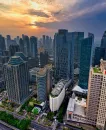



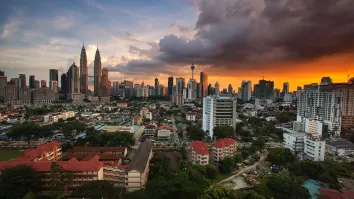
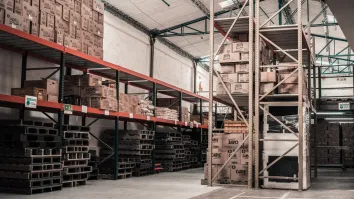



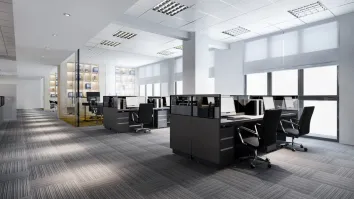
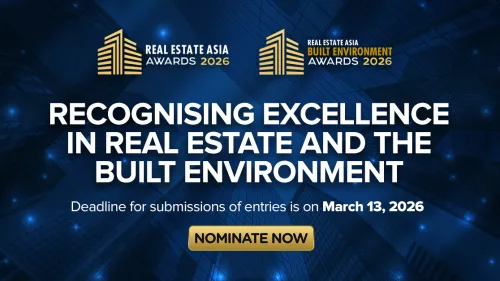


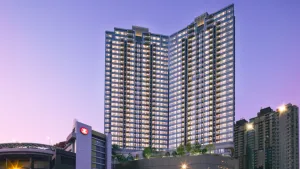



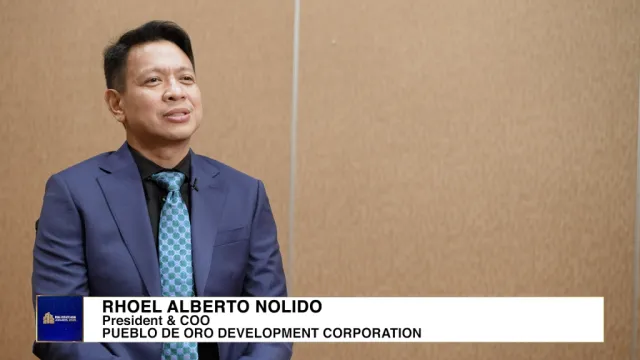

 Advertise
Advertise




